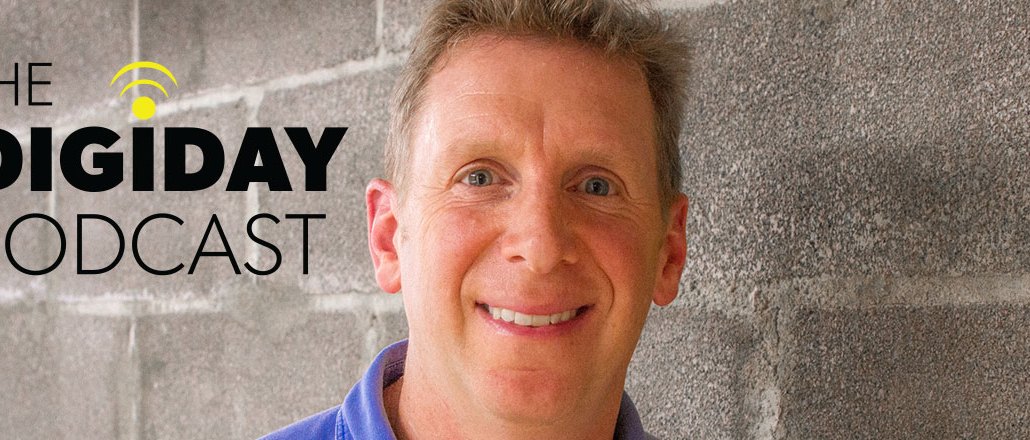Save 50% on a 3-month Digiday+ membership. Ends Dec 5.
360i’s Bryan Wiener: Publishers should focus on doing what Google and Facebook don’t do

Subscribe: iTunes | Stitcher | RSS
Publishers often wring their hands over the growing power of Facebook and Google in the digital advertising market, but Bryan Wiener, CEO of digital agency 360i, believes that anxiety is misplaced.
After all, even if Google and Facebook are taking up the majority of digital ad dollars, the growing market means there’s plenty of opportunities for publishers to sell differentiated ad products rather than focus on trying to do what Google and Facebook do well.
“It’s indisputable that Google and Facebook are the dominant players. But the market is growing at 20-plus percent,” Wiener said on this week’s Digiday Podcast. “It’s going to be a $50 billion market this year. Google and Facebook are two-thirds of the markets. The mistake a lot of companies make is they’re worried about market share. In a high-growth market, you focus on the underserved segments than the leaders in the space.”
Below are highlights of the discussion with Wiener.
The internet has been “awful” at brand advertising
Google and Facebook are running away with the digital market for direct-response advertising. With their deep pools of user data and sophisticated targeting capabilities, Google and Facebook are a direct marketer’s dream. But that leaves a lot of room in demand creation, the brand part of advertising, which the internet has been “awful” at, according to Wiener.
Ad position: web_incontent_pos1
“You’re not going to create an emotional connection with a product or service through doing a search ad,” Wiener said. “It’s just not going to happen. That’s the whole race we’re in: How you make the internet into this experience where you can create this emotional connection, where you can differentiate your product — and how can you do it in a way that scales. When you look at content publishers, an ad should be more effective when you’re reading an article because you’re reading slowly whereas in your news feed you’re scrolling rapidly.”
Publishers are to blame for ad blocking
The old saying is, pigs get fat, hogs get slaughtered. A similar dynamic has played itself out in digital media, as publishers have reacted to the declining ad rates by simply making more pages and placing more ads on those pages. That, naturally, leads to more commoditization — and had led to a user experience that’s been rejected by users by installing ad blockers. Publishers need to take a revenue hit and clean up their sites, Wiener said. Otherwise, they can’t really call themselves “premium” to media buyers.
“They really devalued their product both from an advertising standpoint and pissed off their users,” he said. “They need to retrench and create a premium experience where you can have a branding opportunity. That might mean a temporary loss of revenue.”
Verizon+Yahoo+AOL still lacks cultural cachet
Marketers like to attach themselves to media brands that are integral to the lives of people. That’s as true in digital as it always has been in analog media. Verizon, now with Yahoo and AOL in its stable, wants to make a play to be the No. 3 to Google and Facebook. While it boasts a goal of 2 billion users of its properties by 2020 and a deep trove of data, the combined properties lack something important, Wiener said: They’re not integral to the daily habits of people.
“There’s not a compelling reason on why to go back like a Facebook, Instagram or Snapchat,” he said. “Snapchat is actually best positioned to be the third player. We’re talking to clients about why we need to pay attention to Snapchat.”
Ad position: web_incontent_pos2
Snapchat’s transition to media is in “fits and starts”
Platforms like Facebook and now Snapchat grow to hundreds of millions of users not by focusing on the needs of advertisers. But there comes a point where they need to find the balance of catering to fickle users and rolling out compelling ad products. Snapchat’s process has been in “fits and starts,” Wiener said.
“They have done a really good job in the last six to eight months professionalizing its sales force,” he said. “I think it wasn’t a priority at all prior to that. Their valuation says that was the right order of priorities to focus on the consumer first. They made a lot of progress on targeting and measurement, but there’s a lot more room to grow. Before they’re going to become an enormous platform, there’s going to have to be more measurement, and the agency and marketer ecosystem has to get more comfortable with the messaging. It’s going to take a while to mature.”
More in Marketing

Ulta, Best Buy and Adidas dominate AI holiday shopping mentions
The brands that are seeing the biggest boost from this shift in consumer behavior are some of the biggest retailers.

U.K. retailer Boots leads brand efforts to invest in ad creative’s data layer
For media dollars to make an impact, brands need ad creative that actually hits. More CMOs are investing in pre- and post-flight measurement.

‘AI is permeating everything we do’: How Guitar Center developed 2 AI tools this year
This summer, the company launched a chatbot called Rig Advisor to help customers find the right instruments and products.
Ad position: web_bfu